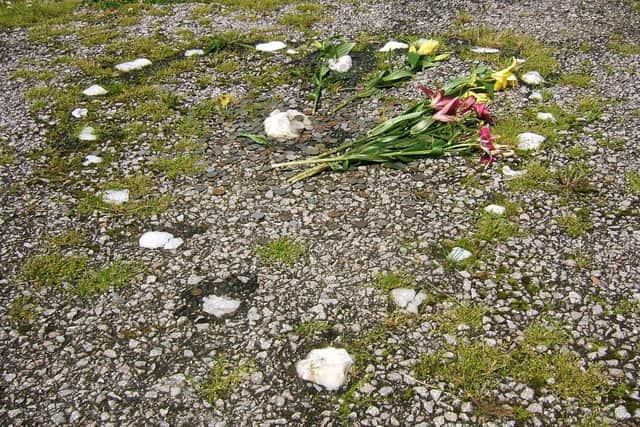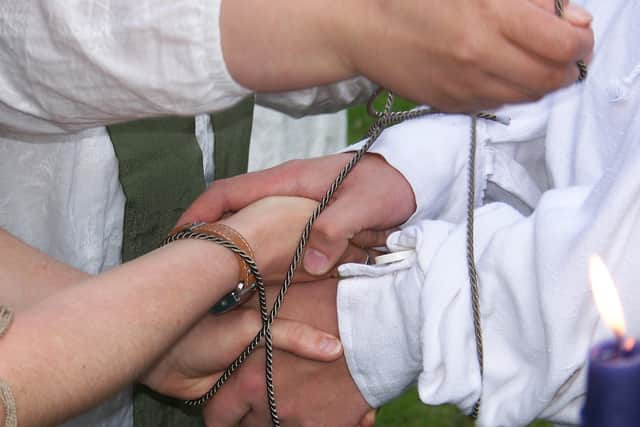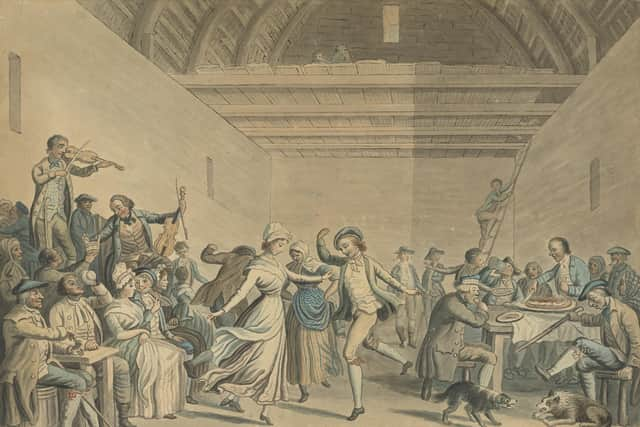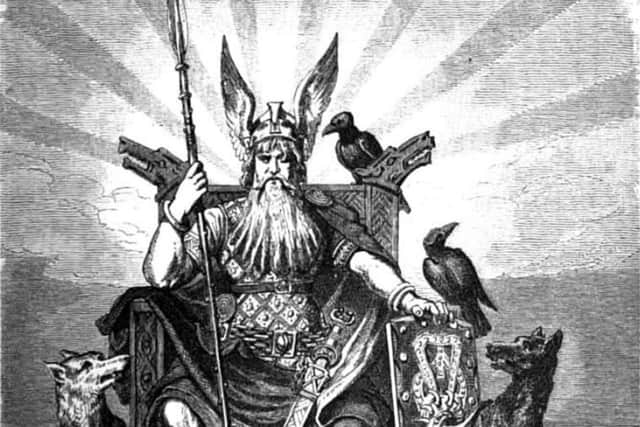Valentine's Day: Love traditions and rituals in Scotland through time
A deep well of rituals and traditions forged in the name of love flowed in Scotland over hundreds of years.
From finding love, testing love, blessing it and then keeping it, those on the road from romance to union were given a little guidance over time.
Advertisement
Hide AdAdvertisement
Hide AdBeliefs included the use of plants which might attract a suitor in the first instance, from a dab of peal wort – or blessed plant – on the lips to a piece of yarrow under a pillow that may lead to a certain sort of magnetism. Scots lovage, too, was long considered an aphrodisiac.


Many rituals were used to tell the fortunes of love, and the identity of a suitor. To conjure the face of a love in a dream, a shoe was put under the bed and the bed entered backwards. Meanwhile, the hair the colour of that of a new love could be found on the ground after the sound of a cuckoo was heard for the first time in summer.
On St Kilda, when love was found, a man gifted the largest bird he could catch – known as the rock-fowl – to his sweetheart in a show of dedication.
But how to know if a new love is the right love? With divorce not an option until relatively recently, there was a great emphasis of making sure love was true and eternal. Commitments were made between two, before they were made in church.


When love blossomed in Orkney, a young couple would walk to the Stones of Stenness – referred to as Temple of the Moon – where the girl would kneel down and pray to god Odin.
The couple would then walk three quarters of a mile to the Ring of Brodgar – also known as Temple of the Sun – where the young man would also pray to the powerful figure in Norse mythology.
Colin Richards, in Building the Great Stones of the North, said: “After that they both went to the Odin stone, where they stood on either side of it and held hands through the stone and made the Odin oath, which was considered binding.
“The two people that made the Odin Oath could be married to each other in church afterwards, but they could not marry another.”
Advertisement
Hide AdAdvertisement
Hide Ad

Courting couples in the Western Isles were allowed to “bundle” before marriage, when they could sleep together without having sex. According to accounts from Lewis, the woman was placed in a large ‘sock’ that was then tied above the knees.
An account in the 1933 autobiography of Sutherland Halliday, a Scottish physician and author, said: “Amongst the people of the black houses, there is a curious custom in courtship, and, like all primitive sex customs, it is based on economic conditions. The time for making love is during the long winter nights when the young men are at home.
"On that bleak windswept coast, it would be difficult for two people to make love out of doors. So the young man goes to the girl's house. Again, with one living room where the family are sitting, it is difficult to make love.


“The girl goes into the sleeping room. There is no fire there, nor any light, because the burning of tallow candles and oil is a consideration to people who are poor. So, for warmth, the girl goes to bed.
"Once in bed, both her legs are inserted into one large stocking, which her mother ties above her knees. Then the young man goes into the sleeping-room, and lies beside her. It is called ‘the bundling’.”
Meanwhile, the custom of handfasting has become a pretty addition for those seeking to add a touch of Scottishness to a legally-binding wedding. However, in the past, it represented a style of marriage in its own right.
Handfasting was outlawed by the Kirk in 1575, but records show the ceremonies – when couples would have their hands bound together in a symbolic show of togetherness – were still being carried out in churches in Leith 30 years later.
Typically people would become bound in a contract where they would live together for a year and a day – with the couple free to leave each other – and find new spouses, if it didn’t work out.
Advertisement
Hide AdAdvertisement
Hide AdIf the union remained strong, it was often expected couples would go on and marry ‘in full’.
Handfasting is believed to be rooted in Norse culture, with Danes having the option of “hand-vesten” to illustrate their commitment. Then, a woman who lived publicly with a man and prepared his meals for three winters became his lawful spouse.
Handfasting became popular in the Borders, with Handfasting Haugh found where the White Esk and Black Esk meet near Bailiehill. Here an annual fair – noted for its handfasting marriages – was held.
In 1575 – 15 years after the Reformation – the General Assembly of the Church of Scotland noted its desire to bring an end to the practice.
The Kirk also sought to rule out Penny Bridals, a form of wedding held largely in rural communities where hundreds of people of the parish chipped in to get the new life of a married couple off the ground, with a great party of drink, dancing and fun held over several days. The celebrations, common in rural communities, were regarded in dim view by ministers and the more pious members of their flock.
Kirk weddings later developed their own customs. In Easter Ross, newly married couples raced home from their first Sunday service. The couple who reached home had a happy and prosperous life. Those left behind were more likely to run into misfortune, according to accounts.
Comments
Want to join the conversation? Please or to comment on this article.
